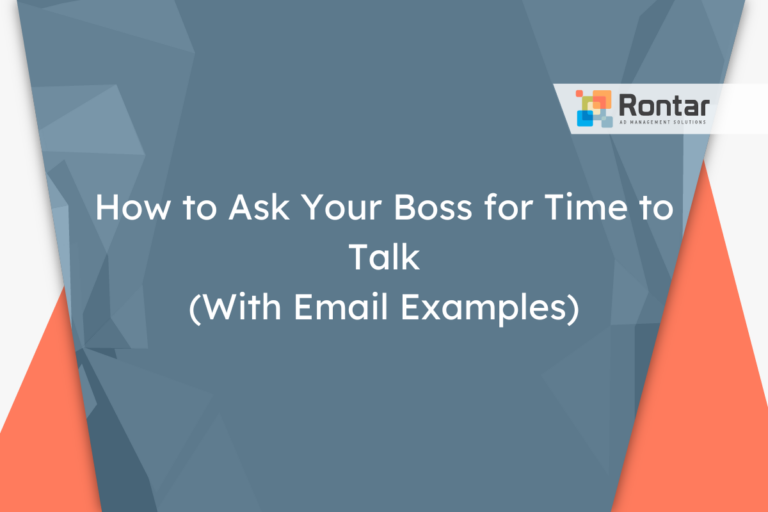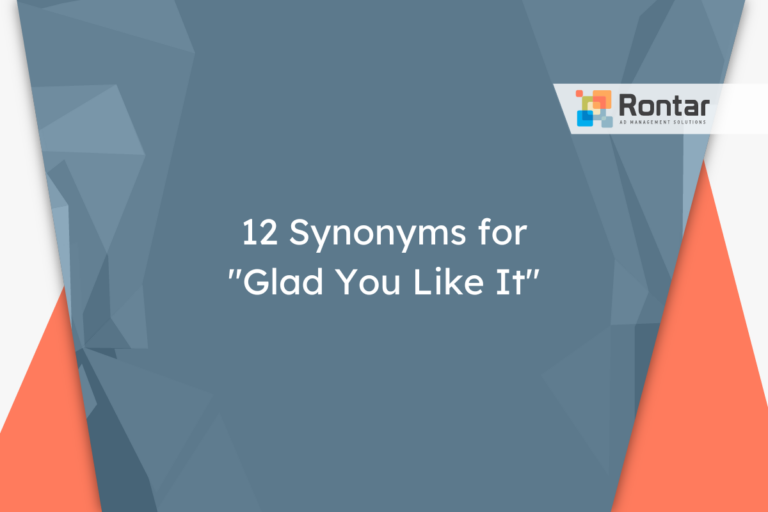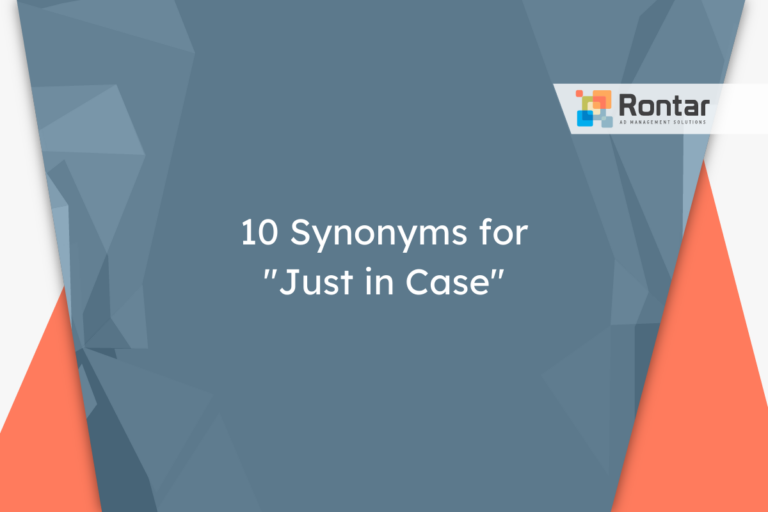16 Professional Ways to Say “Thank You for Letting Me Know” in an Email

The phrase “Thank you for letting me know” is a common way to acknowledge information, but it can become repetitive.
To help you vary your responses and better fit different professional contexts, this article provides sixteen alternatives. Each alternative is explained in detail, including where and how to use it effectively in your emails.
Is It Professional to Say “Thank You for Letting Me Know”?
The phrase “thank you for letting me know” is considered professional, formal, and polite. It is a courteous acknowledgment of receiving new or clarified information.
Typically, this phrase is suitable for communication with colleagues, supervisors, clients, or other business contacts. It works well in emails, formal letters, or during business calls. The neutrality and respect conveyed by the phrase make it appropriate for diverse professional interactions.
Email example:
Dear Mr. Smith,
Thank you for letting me know about the change. I will adjust my plans accordingly.
Best regards,
Emily Thompson
Pros:
- Shows appreciation for the information shared.
- Helps maintain professional courtesy in communications.
- Conveys a positive, cooperative attitude.
Cons:
- Can be perceived as overly formal in casual settings.
- May be redundant in frequent updates or minor details.
While “thank you for letting me know” is broadly applicable, someone might consider using an alternative phrase to vary their language or to tailor their tone more closely to the specific relationship or context.
16 Other Ways to Say “Thank You for Letting Me Know” in an Email
Here are sixteen alternatives to the phrase “thank you for letting me know” that you can use in professional emails to vary your responses and tailor them to different situations:
- Thanks for the update
- Thank you for keeping me in the loop
- Thanks for the info
- I appreciate the update
- Thanks for informing me
- Thanks for keeping me updated
- Thanks for the heads-up
- Thanks for keeping me posted
- Thank you for the notification
- Thanks for the information
- Appreciate the information
- Thank you for the details
- Thanks for filling me in
- I appreciate you keeping me informed
- Got it, thank you
- Understood, thanks!
1. Thanks for the update
This alternative is less formal than “thank you for letting me know” but remains professional and polite. It is a succinct way to acknowledge receipt of new information.
It’s well-suited for emails to colleagues or when continuous updates are being shared within a project team. This phrase can be used in less formal emails but still maintains professionalism. We recommend using this message when the update impacts work or planning.
Example of use in an email:
Dear Alex,
Thanks for the update on the project timeline changes.
Best,
Tom
2. Thank you for keeping me in the loop
This phrase is polite and conveys a sense of inclusion, which can be particularly appreciated in collaborative environments. It is slightly more formal than some other synonyms but still very approachable.
This alternative works well when communicating with team members or project stakeholders. It is especially fitting in scenarios where ongoing updates are crucial for teamwork. It helps establish a tone of cooperative professionalism. We recommend this alternative for emails that aim to reinforce team unity and information sharing.
Email example:
Dear Brenda,
Thank you for keeping me in the loop regarding the client feedback.
Warm regards,
Michelle
3. Thanks for the info
This phrase is more informal but still polite and appreciative. It’s succinct and direct, making it a popular choice in less formal business communications.
It is ideal for messages within internal teams or with peers where there is a relaxed communication style. This phrase is particularly useful for informal updates that may not require immediate action but are still informative. We recommend this for quick, informal updates among colleagues.
Email example:
Hello Casey,
Thanks for the info on the lunch meeting.
Cheers,
Jordan
4. I appreciate the update
This alternative is polite and conveys gratitude while also being slightly more formal than some of the other options. It’s a good choice for professional settings where you want to show appreciation.
It suits communications with both internal and external stakeholders, particularly when responding to updates that affect project outcomes or client relations. We recommend this phrase when you want to express gratitude and ensure the sender feels their effort in updating you is valued.
Email example:
Dear Mr. Coleman,
I appreciate the update on the policy changes.
Thank you,
Diana
5. Thanks for informing me
This phrase is formal and straightforward, emphasizing the act of being informed. It’s suitable for professional contexts where clear communication is key.
It’s appropriate for more formal emails, particularly in environments like corporate offices or when dealing with upper management. This phrase can help maintain a professional tone while acknowledging receipt of important or timely information. We recommend this in communications that involve reporting or important notifications.
Email example:
Dear Ms. Watkins,
Thanks for informing me about the departmental changes.
Sincerely,
Eric
6. Thanks for keeping me updated
This phrase is slightly less formal but very polite, showing ongoing gratitude as updates continue. It’s ideal for iterative communications during a project or process.
This alternative is great for ongoing project communications or when dealing with situations that involve frequent updates. It’s particularly effective in internal team communications or when working closely with a specific group of colleagues or clients. We recommend using this alternative in emails intended to keep the conversation open and ongoing.
Email example:
Hi Kevin,
Thanks for keeping me updated on the software rollout.
Best,
Laura
7. Thanks for the heads-up
This alternative is more informal and typically used when the information provided is a warning or a quick notice. It is still polite but carries a casual tone.
It’s best used with colleagues or in less formal work settings. This phrase is ideal for messages that involve alerts or forewarnings. We recommend this for internal communications where the information has immediate practical implications.
Email sample:
Hey Sam,
Thanks for the heads-up about the server maintenance tonight.
Cheers,
Monica
8. Thanks for keeping me posted
This phrase is informal but maintains a polite acknowledgment. It’s friendly and suggests an ongoing exchange of information.
Suitable for casual workplace environments or with colleagues you have frequent contact with. It fosters a friendly atmosphere and is ideal for situations where regular updates are expected. We recommend this phrase in less formal, ongoing communications.
Example:
Hello Jill,
Thanks for keeping me posted on the project status.
Regards,
Anne
9. Thank you for the notification
This phrase is formal and precise, ideal for acknowledging specific alerts or notifications. It conveys appreciation for the act of being notified, emphasizing the importance of the information received.
This is well-suited for formal communications, particularly in larger organizations or with external partners where clear and professional communication is essential. We recommend this for emails that respond to official announcements or important alerts.
Example:
Dear Ms. Reynolds,
Thank you for the notification regarding the compliance updates.
Sincerely,
George
10. Thanks for the information
This is a versatile, polite phrase that works well in both formal and informal settings. It acknowledges the receipt of information without specifying the nature or importance of it.
This phrase can be used in a wide range of situations, from internal team emails to communications with external stakeholders. It is particularly useful when the information received is educational or informative. We recommend this for emails where the focus is on acknowledging the receipt of informational content.
Example:
Hi Tom,
Thanks for the information on the new regulations.
Best wishes,
Natalie
11. Appreciate the information
This phrase is less formal but very polite and shows a high level of gratitude. It’s concise and effective in expressing thanks without being overly formal.
It’s ideal for internal communications or less formal interactions with peers or colleagues. This phrase is especially suitable for quick emails where you want to express gratitude succinctly. We recommend this for informal yet professional exchanges where brevity is valued.
Email example:
Hey Lisa,
Appreciate the information on the workshop.
Thanks,
Jack
12. Thank you for the details
This phrase is formal and shows a thorough acknowledgment of the specifics provided. It’s suitable for situations where detailed information has been given.
Best used in professional settings where detailed reports or comprehensive updates are shared. This alternative is ideal for emails to superiors or when detailed project information is exchanged. We recommend this when responding to emails that contain critical or complex data.
Email example:
Dear Dr. Harris,
Thank you for the details on the research findings.
Regards,
Elena
13. Thanks for filling me in
This phrase is informal but very polite. It suggests that the recipient has been brought up to speed on certain matters. It’s casual and friendly.
It’s best used with colleagues or in a team setting where information is shared to update a member who might have been out of the loop. This phrase is excellent for maintaining a light, friendly atmosphere in communications. We recommend this for emails that aim to update someone after an absence or when summarizing a meeting they missed.
Email example:
Hello Frank,
Thanks for filling me in on the discussions from yesterday's meeting.
Cheers,
Donna
14. I appreciate you keeping me informed
This phrase is formal and conveys a sincere appreciation for continuous updates. It is polite and professional, ideal for maintaining formal communication tones.
This is particularly effective in professional environments where ongoing communication is crucial, such as during long-term projects or collaborations. It is suitable for both internal and external communications. We recommend this for emails that involve phased projects or when dealing with stakeholders who provide regular updates.
Email example:
Dear Ms. Bennett,
I appreciate you keeping me informed about the stage two developments.
Thank you,
Gregory
15. Got it, thank you
This alternative is informal and straightforward, signaling clear understanding and appreciation. It is very direct and is best used in casual or familiar settings.
It’s suitable for quick responses within teams or with colleagues you frequently interact with. This phrase is excellent for signaling that no further explanation is needed. We recommend this for internal emails where brevity and clarity are valued.
Email example:
Hi Martha,
Got it, thank you for the quick clarification.
Best,
Carl
16. Understood, thanks!
This phrase is informal, concise, and implies that the information has been received and comprehended. It’s friendly and can lighten the tone of an email.
This is another great option for casual office communications, especially when acknowledging receipt of instructions or explanations. It’s perfect for less formal updates or when you want to quickly close a conversation positively. We recommend this for brief acknowledgments among peers.
Example:
Hey Julie,
Understood, thanks! I'll proceed as discussed.
Cheers,
Evan
Final Thoughts
Choosing the right phrase to acknowledge information in emails can influence how your message is received and perceived. The alternatives listed offer a range of formalities and tones to suit different situations and recipients. By using these variations, you can communicate more effectively and keep your email interactions fresh and engaging.






